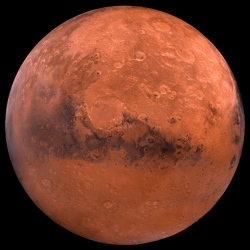
A swarm of robotic bees, nimble enough to fly across Mars and explore the Red Planet’s nooks and crannies, is being funded by Nasa. The cyber-insects, dubbed Marsbees, are the size of bumblebees but have giant wings to generate sufficient lift to hover in the Martian atmosphere, which is around 100 times thinner than Earth’s.
Developed by US and Japanese scientists, the bees would be fitted with sensors and wireless communication devices so they could map terrain, take samples, or even look for signs of life, such as methane emissions.
Although rovers are already exploring Mars, they move incredibly slowly. Since landing in 2012, Nasa’s Curiosity rover has travelled just 11.2 miles.
The Marsbees, would have a mobile base, such as a rover, where they could recharge after they had been deployed.
Dr Chang-kwon Kang, of the University of Alabama, said: “Marsbees are robotic flapping wing flyers of a bumblebee size with cicada sized wings.
“They are integrated with sensors and wireless communication devices. The swarm of Marsbees can significantly enhance the Mars exploration mission.”
The project is one of 25 early stage innovations which have been selected by Nasa from 230 proposals as part of the Space Agency’s Innovative Advanced Concepts (NIAC) scheme.
All receive a cash boost of around $125,000 from Nasa to fund research for nine months and can then apply to be selected from Phase II funding.
"The NIAC program gives Nasa the opportunity to explore visionary ideas that could transform future Nasa missions by creating radically better or entirely new concepts while engaging America’s innovators and entrepreneurs as partners in the journey," said Jim Reuter, acting associate administrator of Nasa’s Space Technology Mission Directorate.
"The concepts can then be evaluated for potential inclusion into our early stage technology portfolio."
Other schemes selected include a steam powered jumping robot named ‘Sparrow’ capable of exploring icy ocean world’s such as Saturn’s moon Titan, which many experts believe holds the best chance for finding life in the galaxy.
